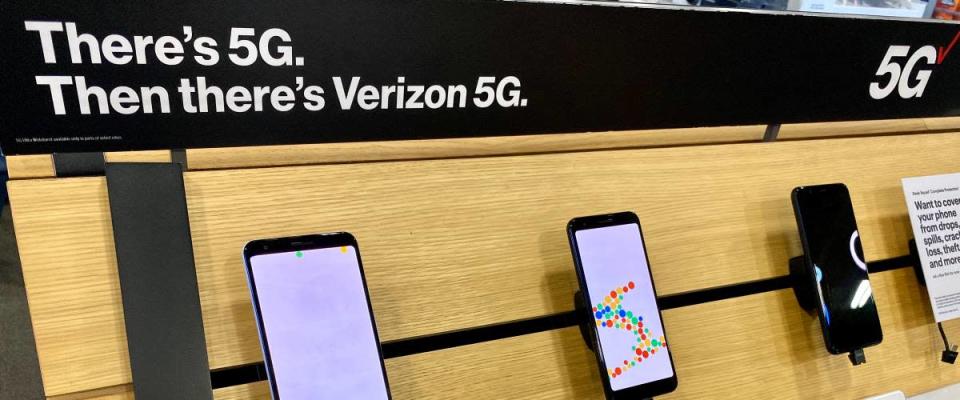Warren Buffett is ready to ride out 2022 with these dividend stocks — 3 picks to help you prioritize safety this year

Everyone wants to buy low and sell high. But with so many stocks already trading at or near their all-time peaks, the hope seems more like “buy high, sell higher.”
If you don’t feel confident in the market’s direction in 2022, remember: You don’t have to trade stocks to make money.
Each year, Warren Buffett collects billions of dollars just from dividends. In fact, the majority of Berkshire Hathaway’s holdings are now dividend stocks.
Here are three companies in the Oracle of Omaha’s collection that provide generous passive income — plus one unorthodox strategy to protect your portfolio from a stock market slide this year.
Verizon Communications (VZ)

With the human race glued ever closer to its smartphones, established wireless carriers like Verizon can dish out oversized dividends.
Right now, Verizon has a quarterly dividend rate of $0.64 per share, which translates to a generous annual yield of 4.9%.
Berkshire owned 158.8 million shares of Verizon at the end of Q3 2021, worth approximately $8.3 billion at the current price.
Verizon says its 4G LTE network covers 99% of the U.S. population, and more than 230 million people are already covered by its 5G network.
Yet despite being a household name, Verizon keeps attracting lots of new customers. For Q3 of 2021, the company reported 699,000 retail postpaid net additions for its wireless segment.
If you’re not happy with the size of your phone bill every month, buying a piece of Verizon is a cheeky way to get a fair amount of money back — especially if you’re investing for free.
Procter & Gamble (PG)

As they say, “Past performance is no guarantee of future results.” But when it comes to paying dividends, a decades-long track record can be pretty reassuring.
Case in point: Procter & Gamble has increased its dividend every year for the past 65 years.
That streak is a testament to its entrenched position in the consumer staples market. P&G has a portfolio of trusted brands like Bounty paper towels, Crest toothpaste, Gillette razor blades and Tide detergent.
These are products that households buy on a regular basis, regardless of what the economy is doing. As a result, the company can deliver reliable dividends through thick and thin.
The latest dividend hike was announced in April 2021, when the board of directors approved a 10% increase to the quarterly payout to 86.98 cents per share. The stock currently yields 2.2%.
Berkshire held 315,400 shares of P&G as of Sept. 30, worth approximately $50.8 million.
Coca-Cola (KO)

No discussion of Buffett’s dividend stocks would be complete without his beloved Coca-Cola.
Buffett started hoarding shares of the beverage giant in the late ’80s. Today, Coca-Cola is the fourth largest position at Berkshire, just behind Apple, Bank of America and American Express.
Coca-Cola went public more than 100 years ago and has increased its dividend for 59 consecutive years.
It’s not hard to see why the payout has been so reliable: The company’s iconic products are sold in more than 200 countries and territories, and even in a recession, a simple can of Coke is still affordable to most people.
In Q3, Coca-Cola’s revenue grew 16% year-over-year to $10 billion. Adjusted earnings per share rose 18% from a year ago to 65 cents. The stock is up 12% over the past year.
Not all of us are as good as the Oracle of Omaha at picking winners and losers. Remember you can always build a blue-chip dividend stock portfolio just by using your “spare change.”
An artful alternative

Buffett’s strategy shows you don’t need to constantly buy and sell stocks to be successful. But you also don’t need to limit yourself to stocks in general.
Several real assets have survived all kinds of economic environments while also delivering market-beating returns.
For instance, contemporary artwork has outperformed the S&P 500 by a commanding 174% over the past 25 years, according to the Citi Global Art Market chart.
It’s becoming a popular way to diversify because it’s a real physical asset with little correlation to the stock market. On a scale of -1 to +1, with 0 representing no link at all, Citi found the correlation between contemporary art and the S&P 500 was just 0.12.
Investing in art by the likes of Banksy and Andy Warhol used to be an option only for the ultrarich, like Buffett. But with a new investing platform, you can invest in iconic artworks, too, just like Jeff Bezos and Bill Gates do.
This article provides information only and should not be construed as advice. It is provided without warranty of any kind.




